GPCR/G protein

All GPCRs share a common seven trans-membrane structure. GPCRs are associated with heterotrimeric G-proteins which are GTP-binding proteins made of alpha, beta, and gamma subunits. When a ligand binds to GPCR, it activates the attached G-protein, the GDP is replaced with GTP. The activated G-protein then dissociates into an alpha and a beta-gamma complex which activates downstream signaling pathways. These intracellular signaling pathways include cAMP/PKA, calcium/NFAT, phospholipase C, protein tyrosine kinases, MAP kinases, PI-3-kinase, nitric oxide/cGMP, Rho, and JAK/STAT.
GPCRs are one of the most important therapeutic targets for various diseases, over 30% of all modern medicinal drugs target this family. Aberrant GPCR functions are involved in pathological conditions such as neurological, immunological and hormonal disorders. A large number of GPCRs have been identified, but whose ligands are not known, are classified as orphan receptors.
-
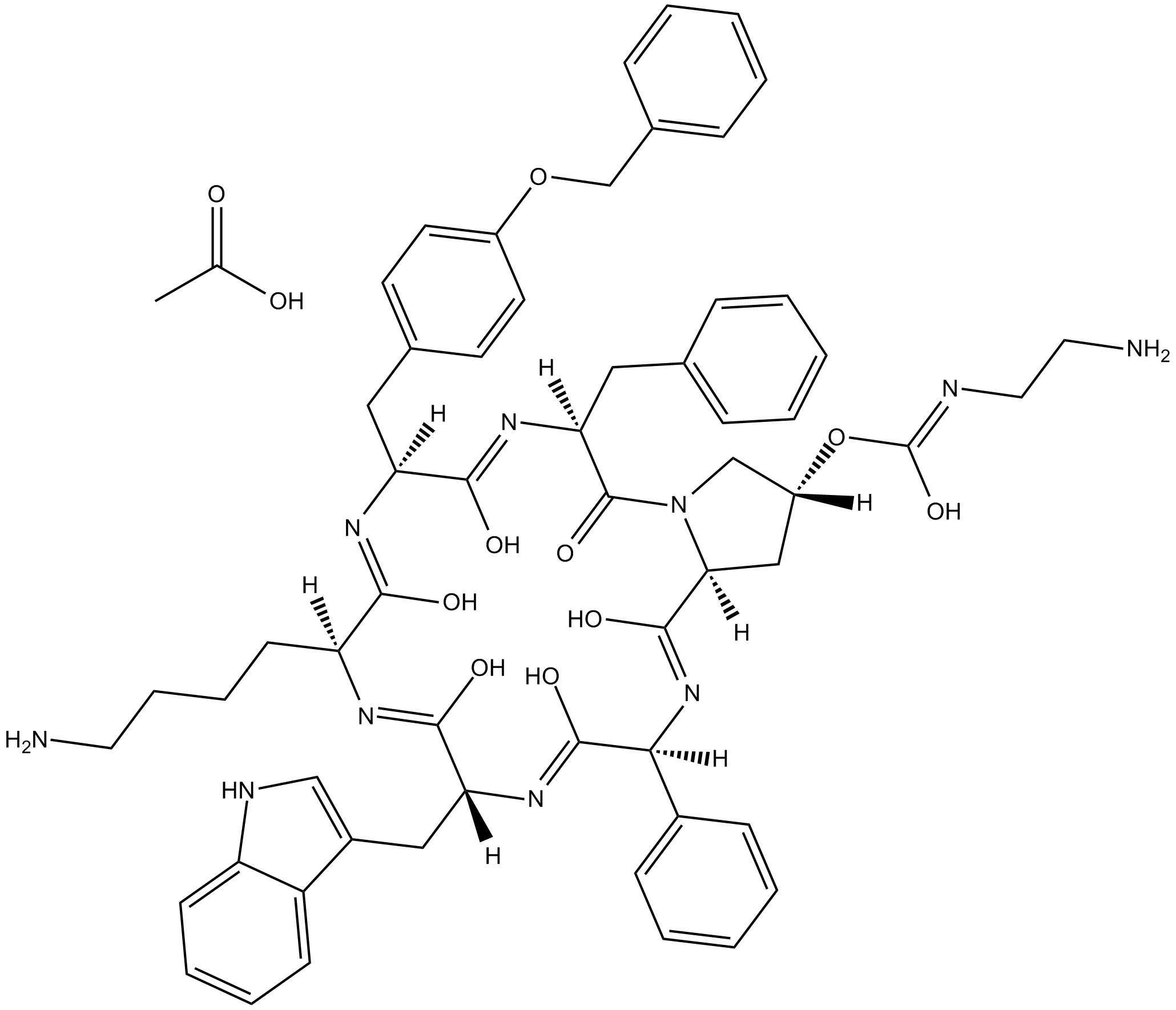 B3596 Pasireotide AcetateTarget: Somatostatin ReceptorsSummary: stable cyclohexapeptide somatostatin mimic
B3596 Pasireotide AcetateTarget: Somatostatin ReceptorsSummary: stable cyclohexapeptide somatostatin mimic -
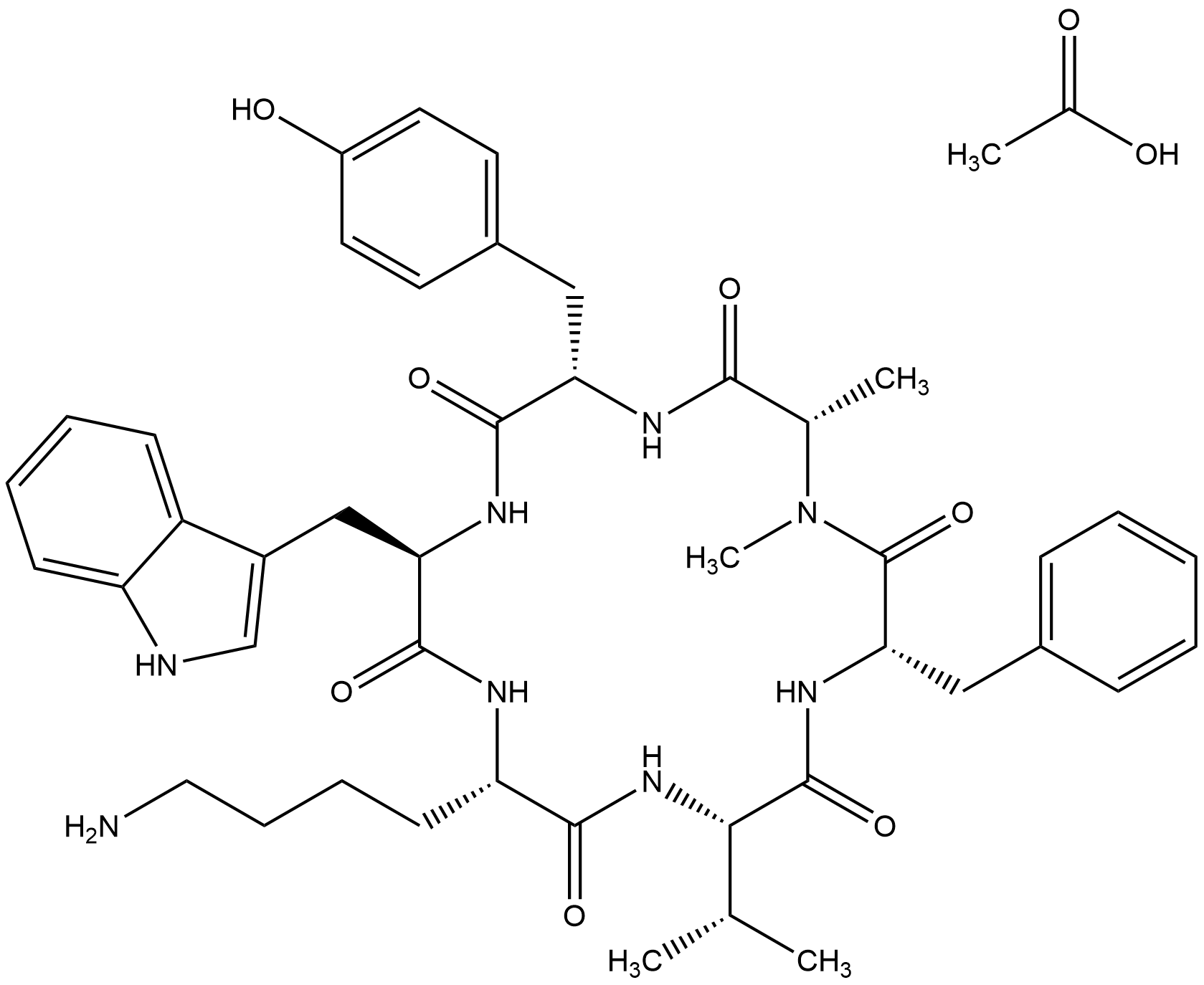 B6871 Seglitide acetateSummary: sst2 and sst5 somatostatin receptors agonist
B6871 Seglitide acetateSummary: sst2 and sst5 somatostatin receptors agonist -
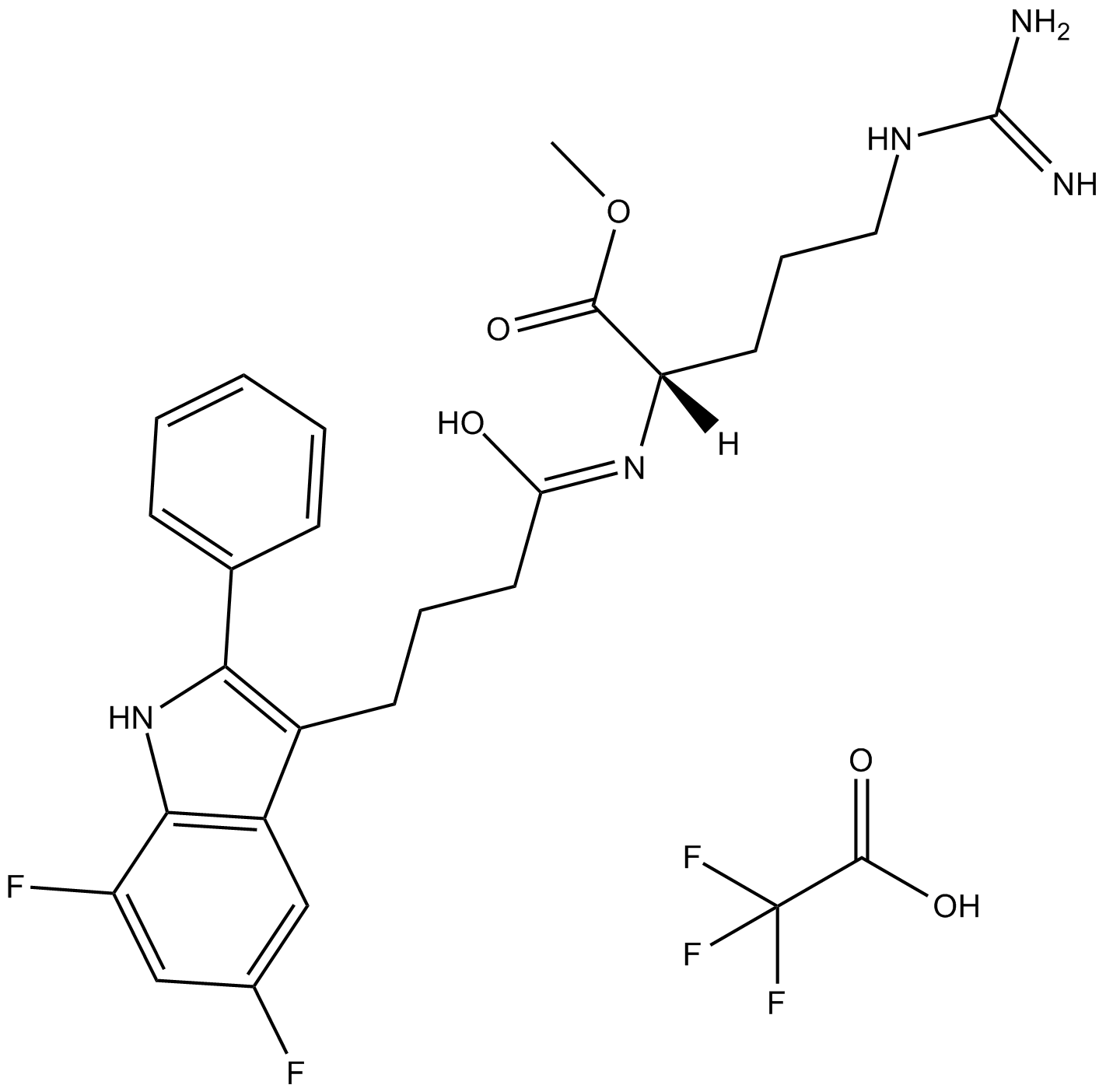 B6904 L-803,087 trifluoroacetateSummary: somatostatin sst4 receptor agonist
B6904 L-803,087 trifluoroacetateSummary: somatostatin sst4 receptor agonist -
 B6905 L-817,818Summary: somatostatin sst5 receptor agonist
B6905 L-817,818Summary: somatostatin sst5 receptor agonist -
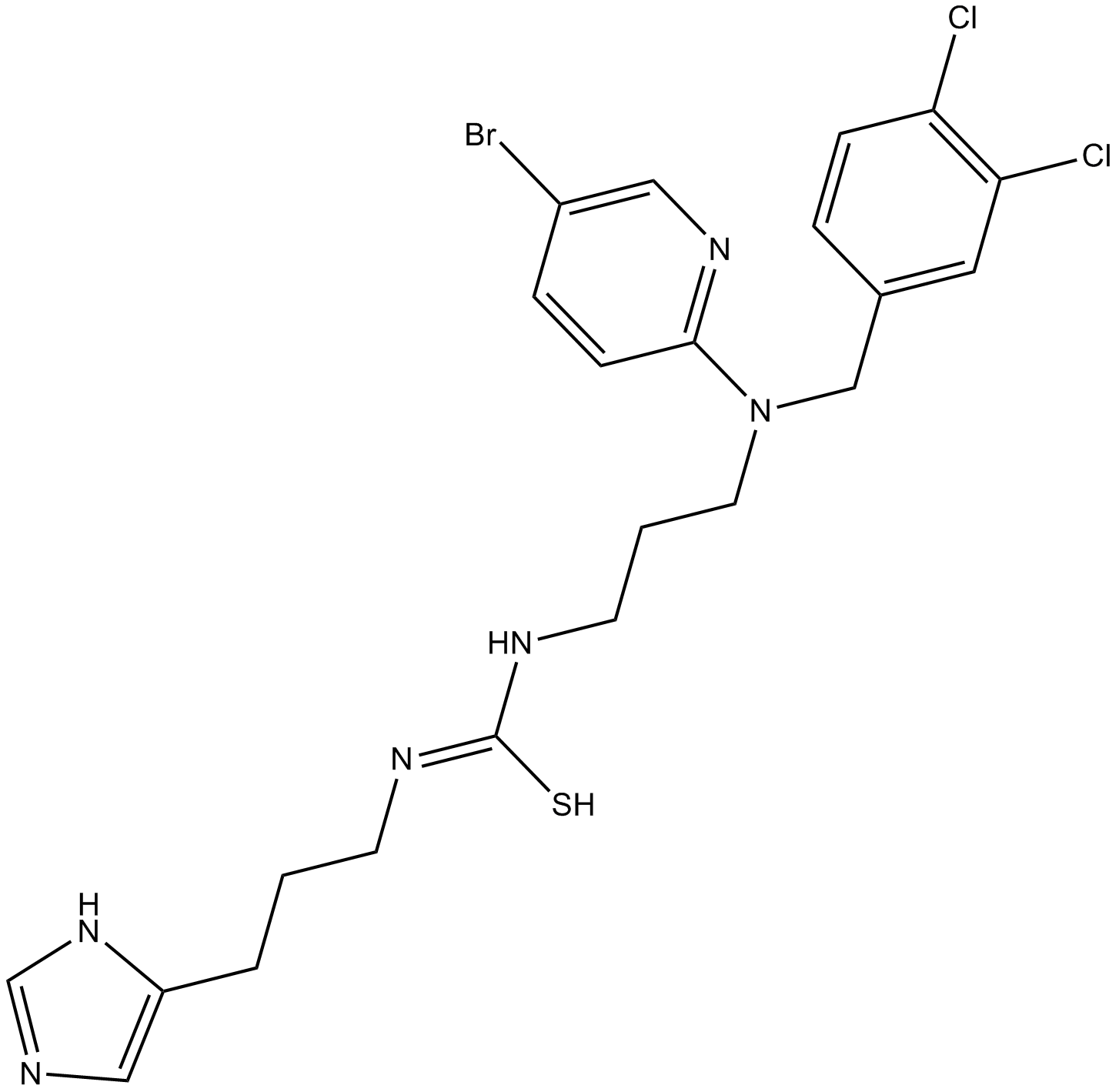 B7054 NNC 26-9100Summary: Somatostatin sst4 receptor agonist
B7054 NNC 26-9100Summary: Somatostatin sst4 receptor agonist -
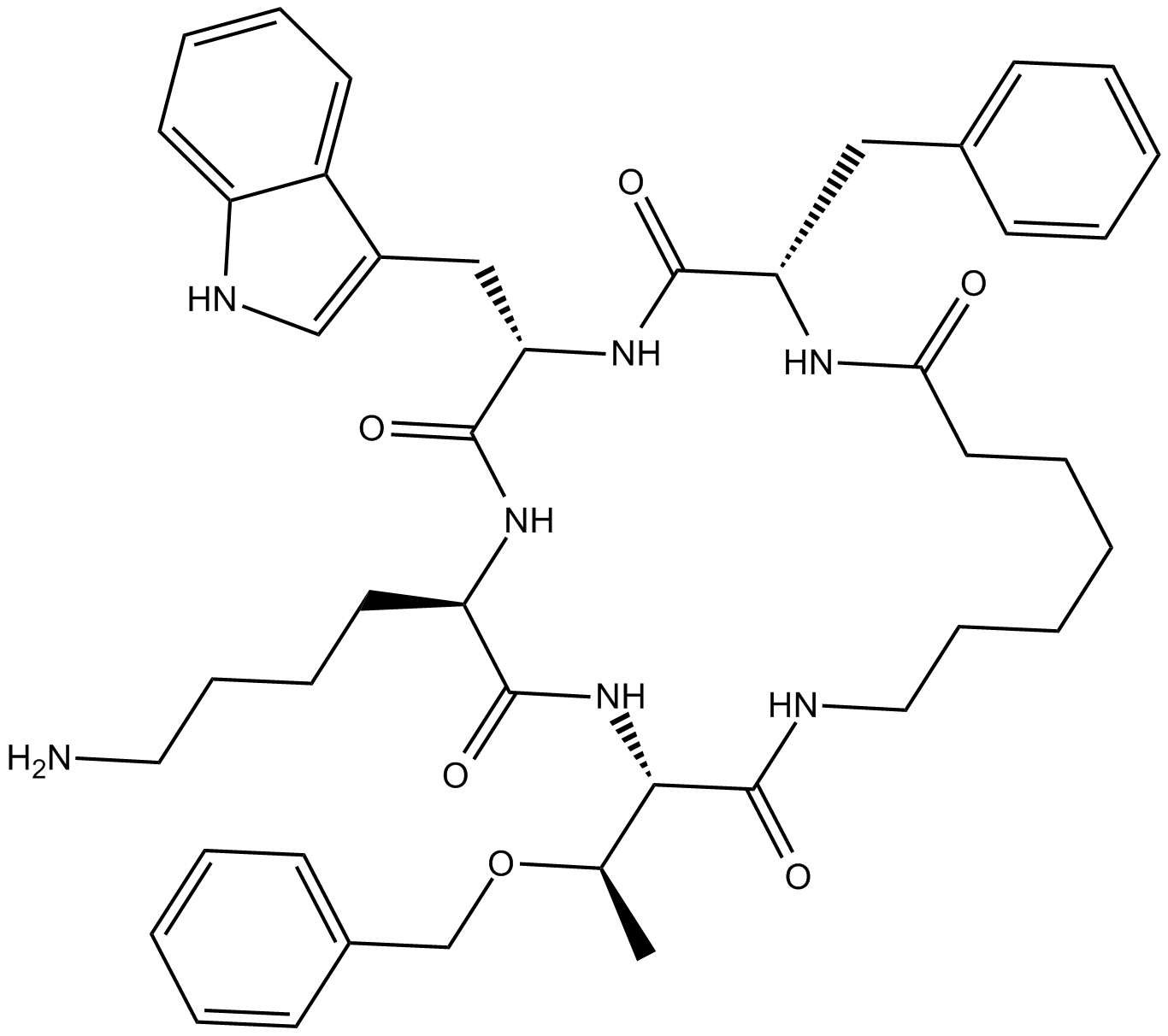 B7411 Cyclosomatostatin1 CitationSummary: somatostatin receptor antagonist
B7411 Cyclosomatostatin1 CitationSummary: somatostatin receptor antagonist -
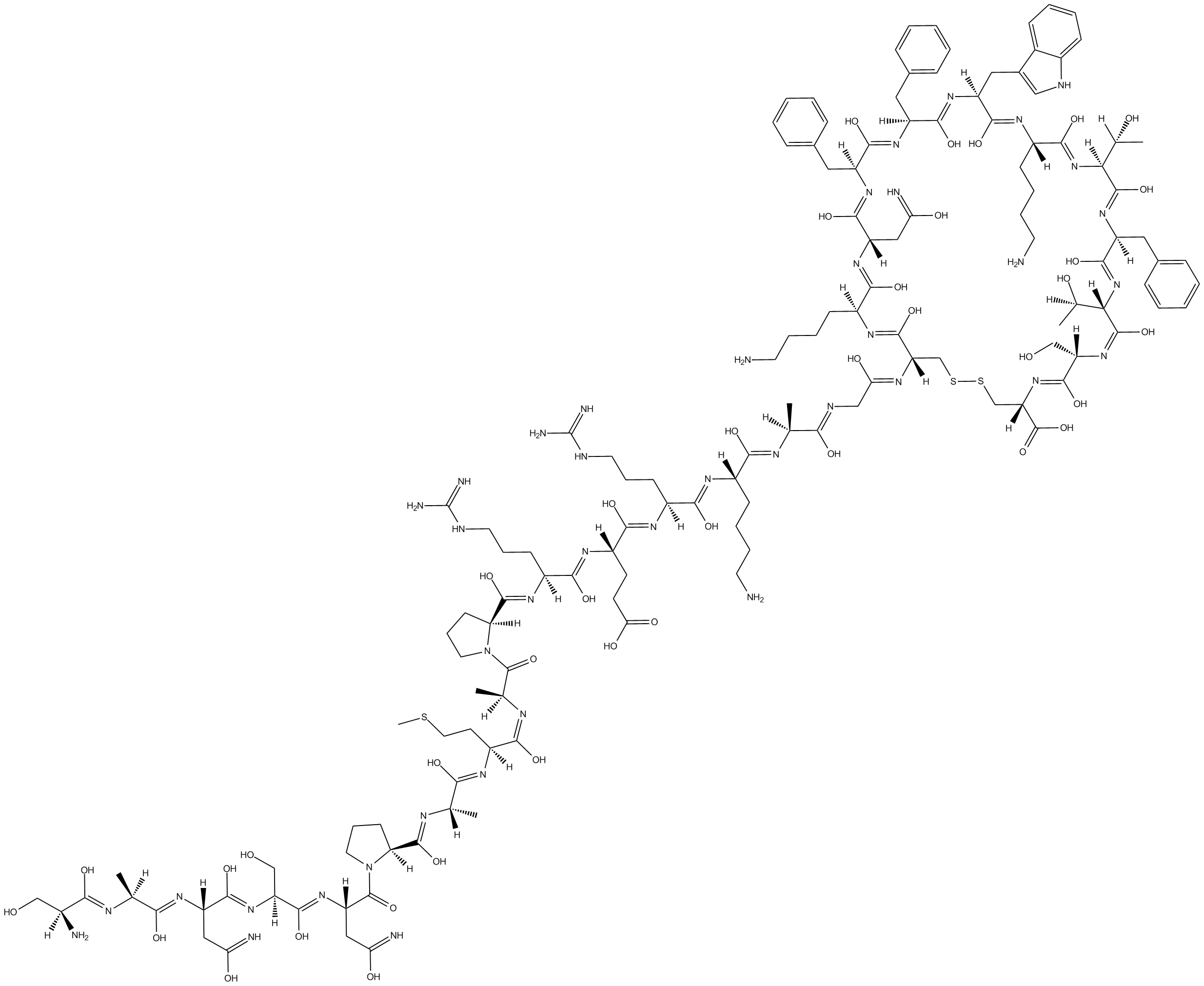 B5064 Somatostatin 1-28Summary: Somatostatin receptor agonist
B5064 Somatostatin 1-28Summary: Somatostatin receptor agonist -
 B5196 BIM 23056Summary: Somatostatin receptor ligand
B5196 BIM 23056Summary: Somatostatin receptor ligand -
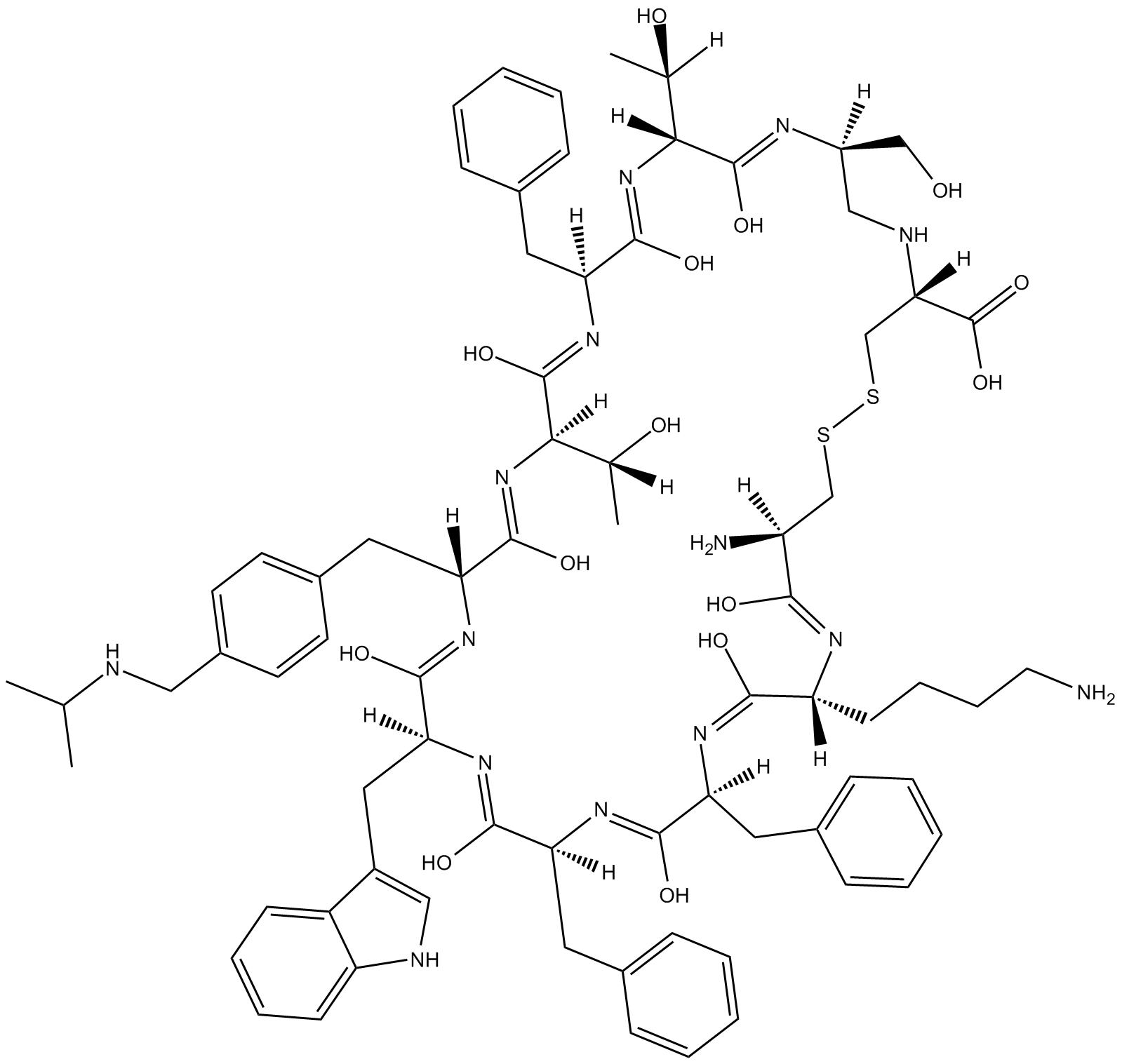 B5307 CH 275Summary: Potent somatostatin receptor 1 (sst1) agonist
B5307 CH 275Summary: Potent somatostatin receptor 1 (sst1) agonist -
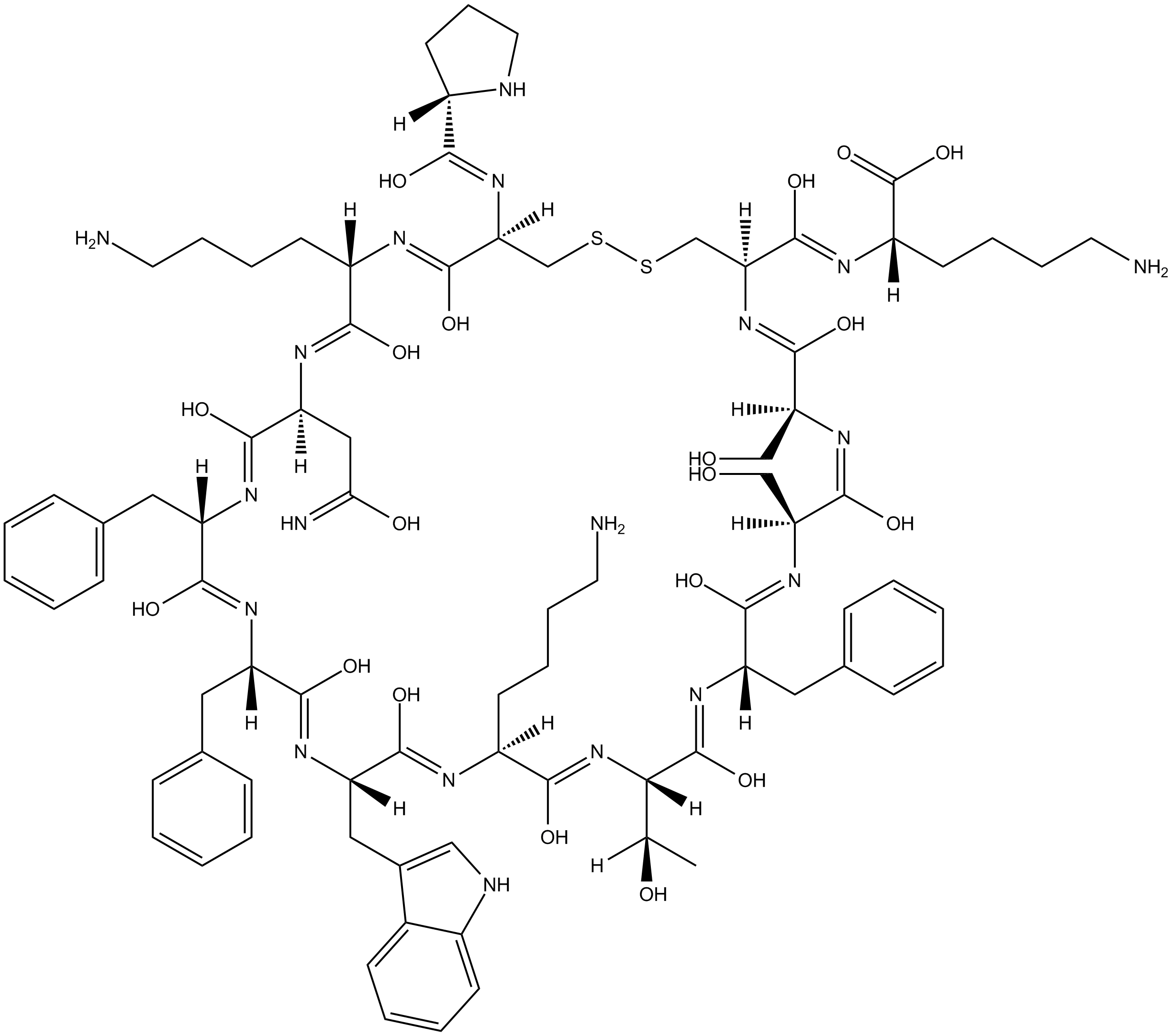 B5416 Cortistatin 14Summary: Endogenous neuropeptide that has structural and functional similarities to somatostatin-14
B5416 Cortistatin 14Summary: Endogenous neuropeptide that has structural and functional similarities to somatostatin-14

